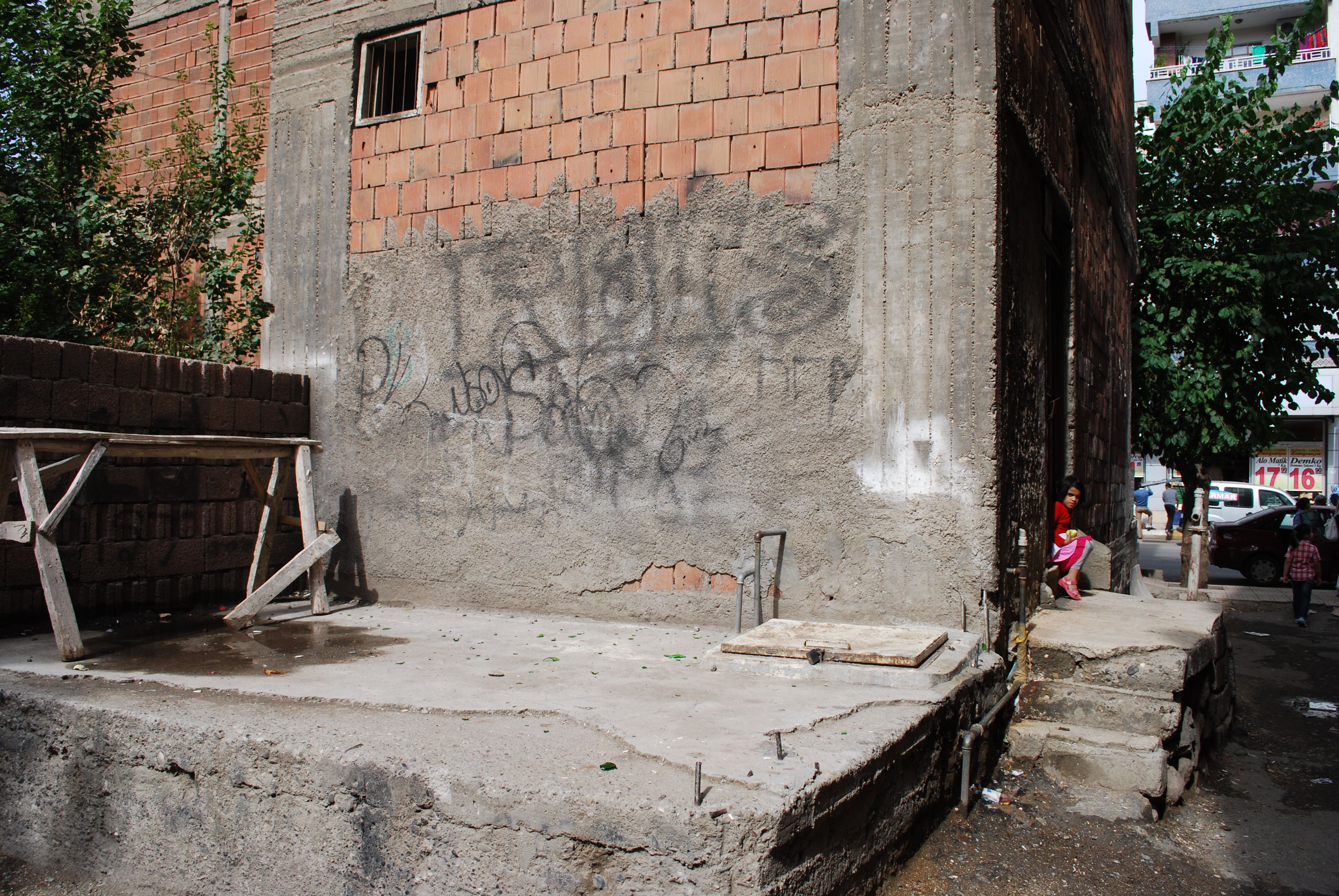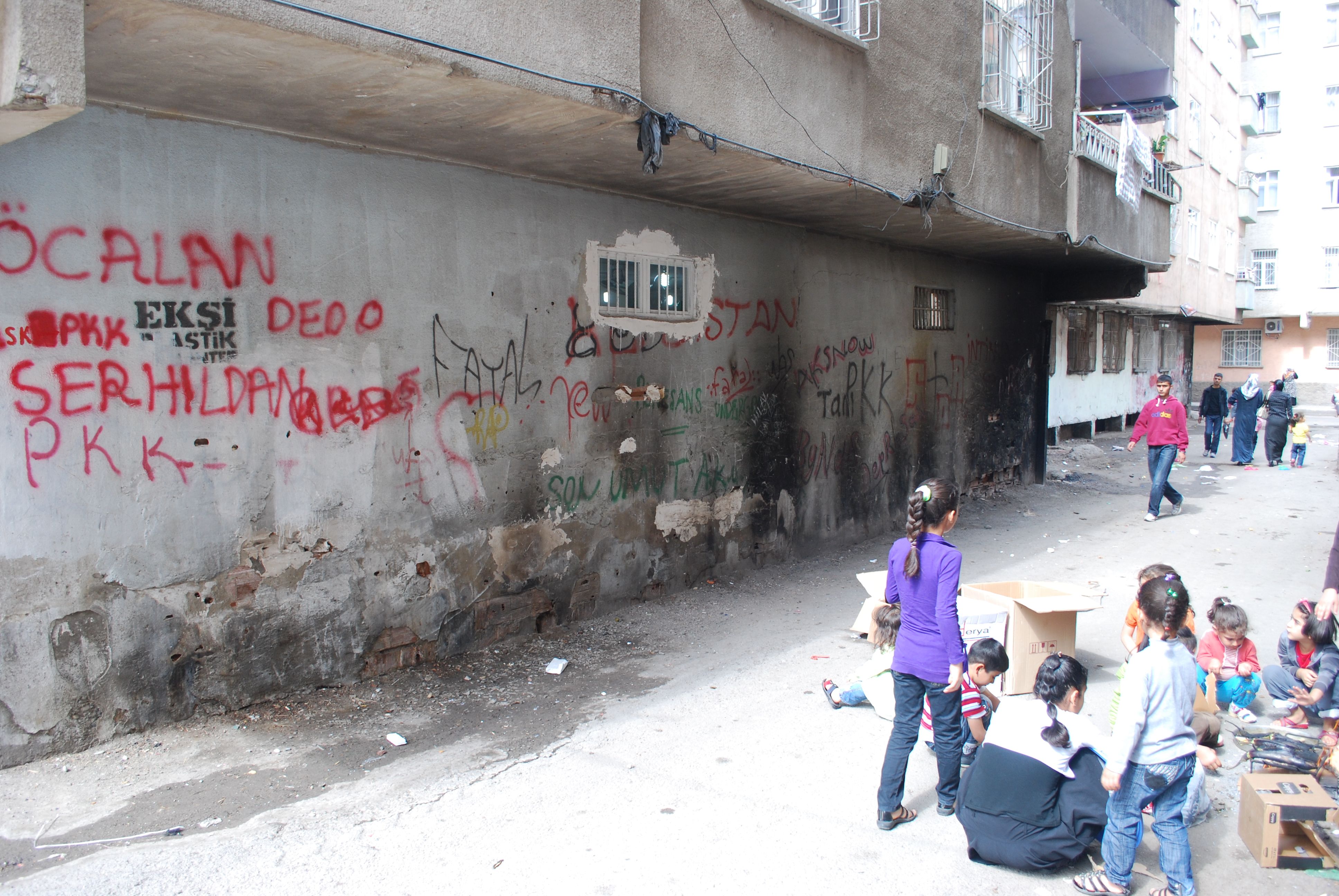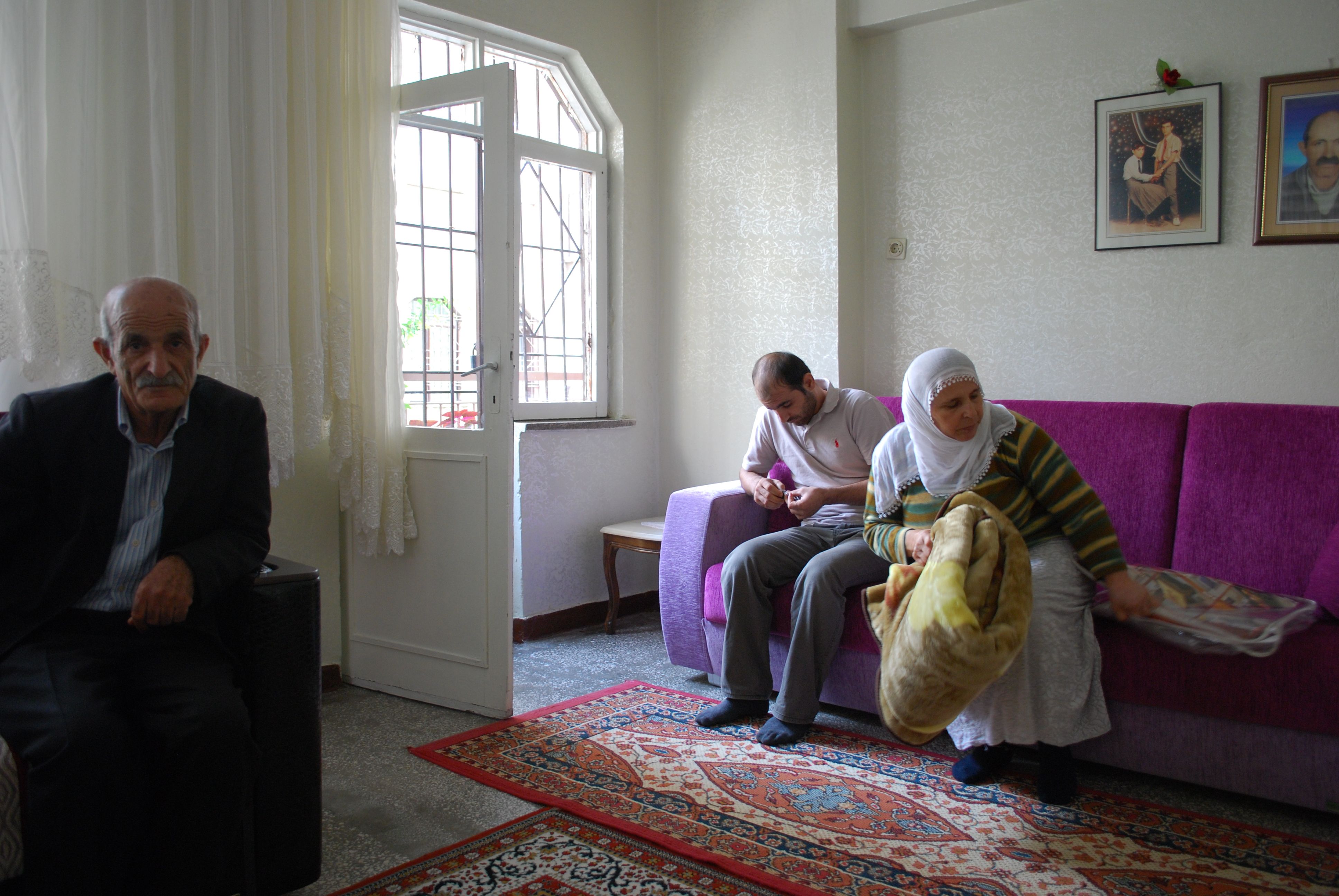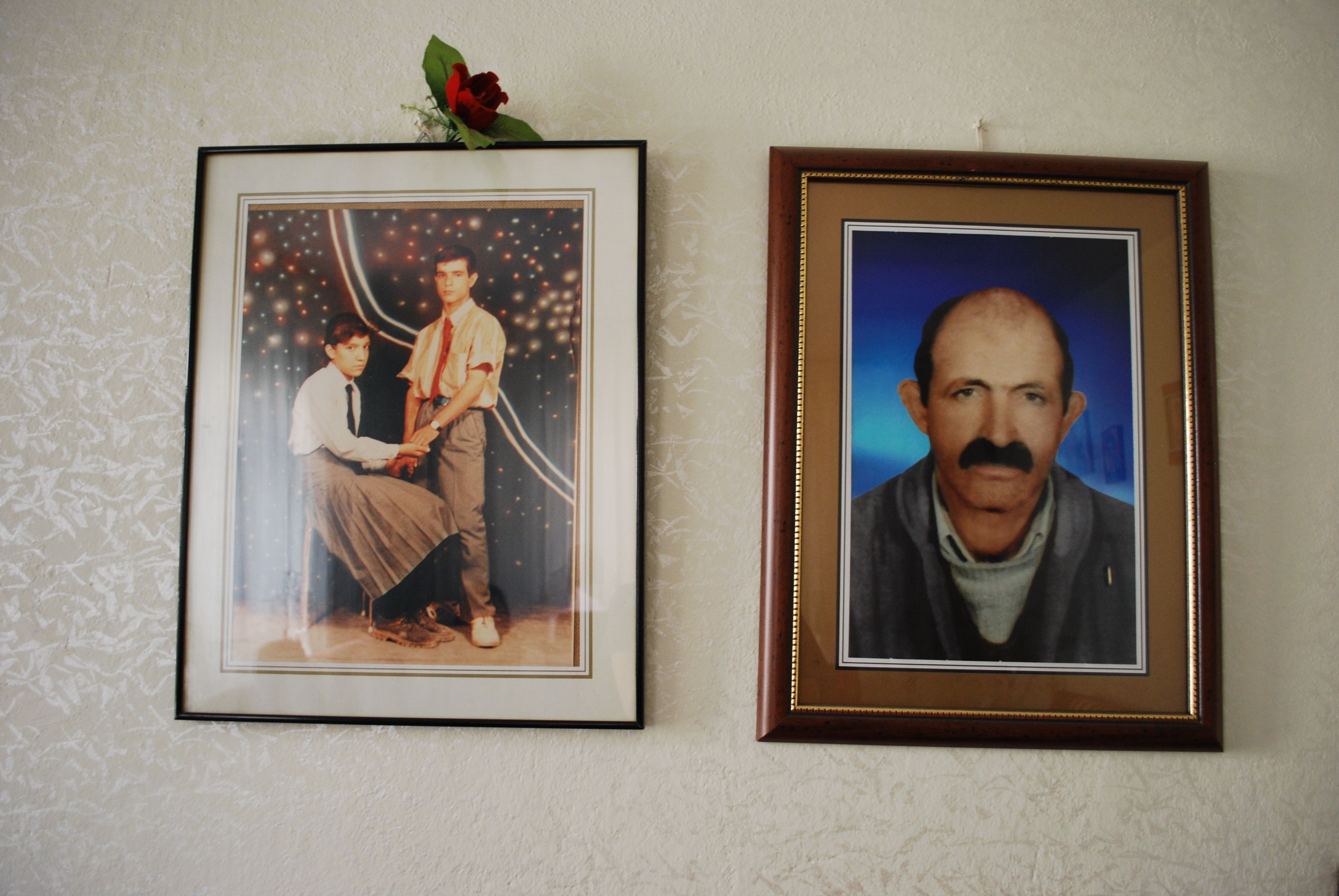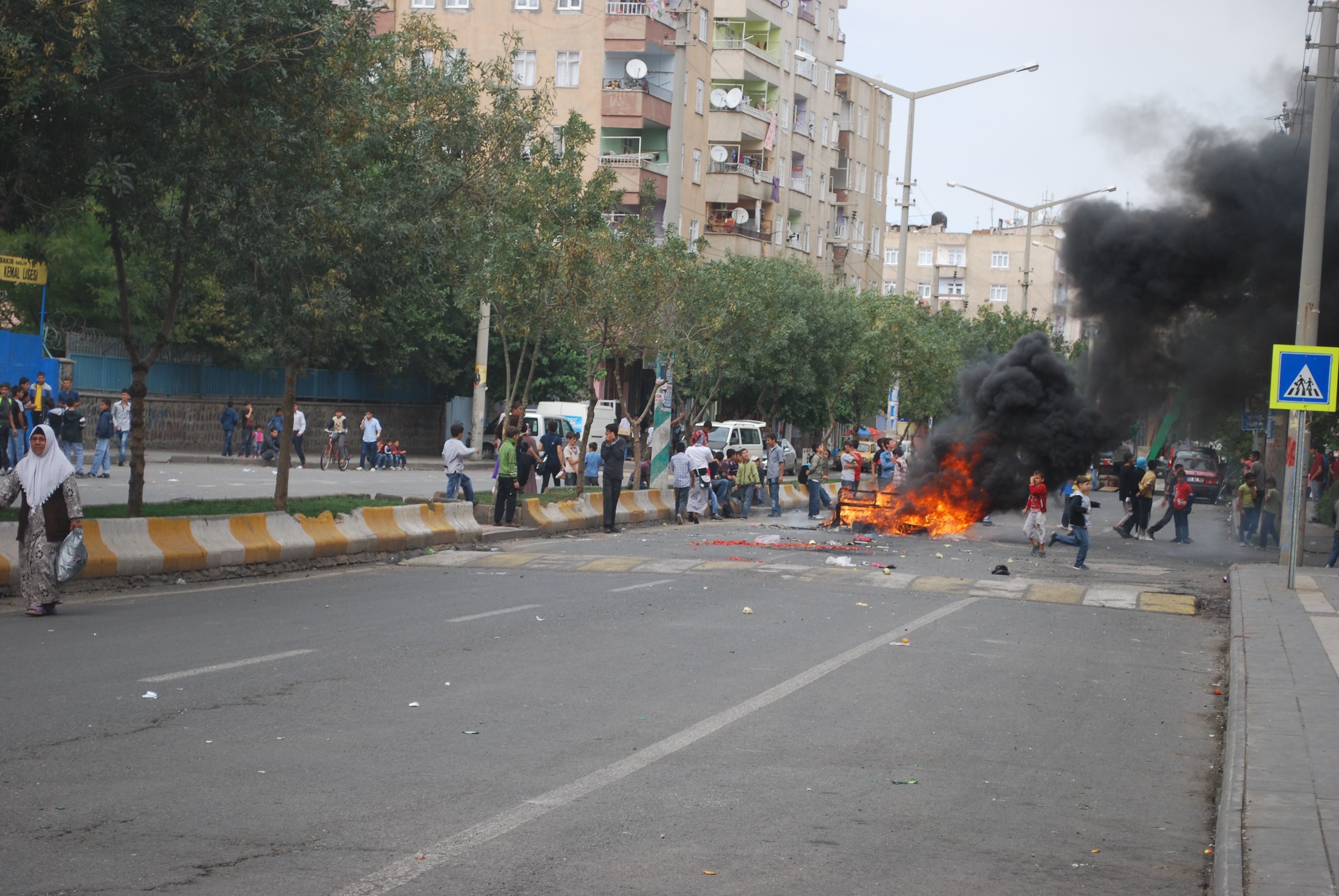The July 2010 revision of the anti-terror law seemed to be a positive sign that the Turkish government was paying attention to the demands of the Kurdish minority. Ferman, the 19-year-old former prisoner still struggling with his memories of prison, described to me the process of his sudden release: "We were following the debate over the law on TV, but I had no hope. On the evening of the third day of the debate a guard came and said we were going to be released. I thought it was another way to torture us. The next day my family came and I went home."
But one year and five months later, the majority of Ferman's cellmates are back in prison. According to Raci Bilici, the acting chairman of the Diyarbakir Human Rights Association (the current chairman has been in prison for two years), in 2010, before the revision of the law, there were 95 arrests at demonstrations in the southeast; in the first six months of 2011, there were 485 arrests.
"The children who have been released from the law are not totally free," Bilici said. The government changed the law, he asserts, not because of a real interest in reforming its legal system, but because of international pressure and the ongoing attempt to join the European Union. It was a small bandage over a cavernous wound.
"For one year the agenda was quiet and people thought everything was good. But when the re-arrests started, people saw that things had in fact gotten worse," Bilici told me.
With the majority of released stone-throwing kids physically and emotionally scarred by prison, cut off from education, alienated from normal life, and increasingly political, many easily find their way back to prison. (Exact percentages are still being ascertained by the HRA and other organizations.) The charges are the same—being a member of a terrorist organization, spreading propaganda for a terrorist organization, throwing stones, damaging property—and the consequences are all too familiar. The stone-throwing kids are charged as adults because now, five years since the law was first tightened, most of them are.
"It was a nice mood at the time," said Mehmet Ali Aydin, the chairman of the Diyarbakir branch of the BDP (the pro-Kurdish Peace and Democracy Party). "But in reality, changing the law was a kind of psychological torture. The kids who were released either went to the mountains or were arrested again when they turned 18." ("go to the mountains" is code for joining the armed PKK resistance).
Aydin was glued to a TV broadcast from Turkey's parliament floor where formerly boycotting BDP members were reading the oath of office. His anxiety over this broadcast illustrates the tough spot many BDP members find themselves in when they choose to work within the system. On the one hand, Aydin supported the move, feeling that increased violence dictated the need to return to work. But watching the ceremonial swearing of allegiance to a state which continued to imprison his colleagues was difficult. He chain-smoked Marlboro Reds. When the broadcast ended, he watched soccer, with some relief.
Aydin was distrustful of the motives behind the lightening of the anti-terror law. "It was dishonest," he said. "Rich people, the criminal who killed Hrat Dink [a Turkish-Armenian journalist assassinated in 2007], they were also positively affected."
Jenan Atabay, a human rights lawyer in Diyarbakir, defended over a hundred of the children between 2008 and 2010. When the law was revised in 2010, "it was a positive step for the children," she said. "But when we look at the new law we have to look at all of Turkish law. It's not enough, children can still be arrested easily."
To some, re-arrest seems inescapable. Because of their criminal history, the kids are under more suspicion upon release; because they have been radicalized in prison, they are more likely to engage in suspicious activity.
"The children know the police and the police know the children," Atabay said. "The children are easily recognized." Some feel trapped. "A few of them told me that when they were arrested again they realized the police had been following them," Atabay said. "The police had accrued photos and videos in a way that makes it seem like they had been tracking them, building cases."
Bilici sees it as an issue of presumed guilt. "If there is a demonstration or an attack, the police go straight to the houses of the stone-throwing kids."
I met Tajdin (his name has been changed), the father of a re-arrested stone-throwing kid, in Baglar, a largely poor and protest-heavy neighborhood in Diyarbakir. It was Saturday, and the streets were full of people. Along the main road, a group of young men milled anxiously around a stack of burning tires. It was, according to my interpreter, a protest. We approached to take photos, and were accused of being police (the act of photographing Kurds at demonstrations is seen as an affront, and justifiably—photographs taken at demonstrations are often used as airtight evidence during court cases). A police presence, not yet there, seemed vital to the realization of the event—the spark held up to a vague but combustible anger.
Women huddled around grills preparing eggplant for canning and men gathered at tea houses. The gray apartment buildings were covered with graffiti, much of it related to the PKK and its founder, Abdullah Ocalan. There seemed to be a great divide between the politicized older generation—whose strong beliefs and fervent complaints can be related while charring some eggplant—and the younger generation, whose anger is consuming.
"When I see the kids at the protests, they don't even recognize me," Tajdin said, leading us through Baglar. "When I was a kid, we were angry. But we still listened."
In Tajdin's apartment his wife was folding a large, brown blanket made of a synthetic velvety material to send to their son, Mazin (his name has also been changed), who was arrested again five months ago, just after his 18th birthday. It was already getting cold, and Tajdin's wife worried about the blanket reaching Mazin in time. "We could take the blanket to him, but they tell us we have to mail it by cargo, which costs money and will take a month," she said.
The couple had four boys and three girls, but one of the boys died fighting in the mountains. His photograph, taken three days before he left to join the guerilla forces, was hanging on the wall above the couch, a plastic red rose stuck into the frame. In the photograph, the son stands bashfully holding hands with his girlfriend, who is seated. They are both wearing gray school uniforms and neither smile. It's the kind of photo parents display out of affection for a grown-up son, whose confident adulthood is belied by awkward but lovable teenage years. In many ways, this is what Tajdin and his wife are doing—they are ruined by loss, but betray a certain pride in their son's bravery. It is also the last photo they have of him.
According to the family, Mazin, their youngest, was arrested the first time for selling a pro-PKK newspaper at a demonstration. "Ideologically, we support the PKK," Tajdin said, "but not in practice." The accusations against Mazin were expected—supporting terrorism—but that he was going to be tried as an adult was a surprise. The family was kept mostly ignorant of the case as it progressed, not allowed to enter the courtroom; ironically, they were told this was because Mazin was a minor. "They called him a child so that we couldn't go to court, but then they called him a terrorist. Isn't that funny?" Tajdin's eldest son said, bouncing his young baby on his lap.
Tajdin's retelling of his son's second arrest supports Bilici's claim that police make home visits to the free stone-throwing kids. "One night at four in the morning the police came with a warrant to check our house. Mazin was asleep. When they noticed him, they took him." Later, Tajdin said, they showed him two photos as evidence. One, of a young man with his arm cocked behind his head, ready to throw a stone, "was not my son," he said. Another, of Mazin sitting in a chair close to a demonstration proved nothing, the father thought.
The retelling also supports the notion that the police felt they had reason to follow Mazin. After prison, "his psychology was ruined," the brother said. "He became more aggressive and more politically active."
"He was probably throwing stones," the mother said. "Maybe fireworks."
With both the law and his age against him, Mazin's future looks bleak. According to Bilici, the wording of the anti-terror legislation allows for a multitude of charges. "If your mouth is open, it's a crime. If your hand is up, it's a crime. If you say slogans—no matter what they are for—it’s a crime. Add them all up," he said.
The re-arrests are "revenge against the children who were released," Mazin's brother said. "The new law was a show. When those children turned 18, they collected them again. Either that, or the children had gone to the mountains because of pressure from the police."
I asked, would they have preferred that Mazin went to the mountains rather than back to prison? "No. We think of our mother," the brother said. "She has already lost one son to the mountains. It is better for Mazin to be in prison."
But later, while driving from Baglar to a nearby park, the brother contradicted himself. "I can't say this in front of my mother, but to me it would have been better if Mazin had gone to the mountains. I would have preferred that he spend all his angriness and revenge there, not at demonstrations. Twelve years for one stone is too much."
The next day, a Sunday, I passed the spot of the small protest (called "pirate protests," owing to their lack of organization). The police had arrived in two armored vehicles, passing in front of a group of about 15 teenagers and kids, many of whom clutched chunks of concrete, likely taken from the chipped walls and sidewalks of Baglar, in their hands. The stone throwing was a choreographed, well-rehearsed routine. When the police passed, the group surged toward them in a tight pack until, at the last minute, one member was propelled about two feet in front to launch a stone before retreating and being reabsorbed by the group. The kids then turned and ran, as one, into the winding, unmarked alleys of Baglar.
